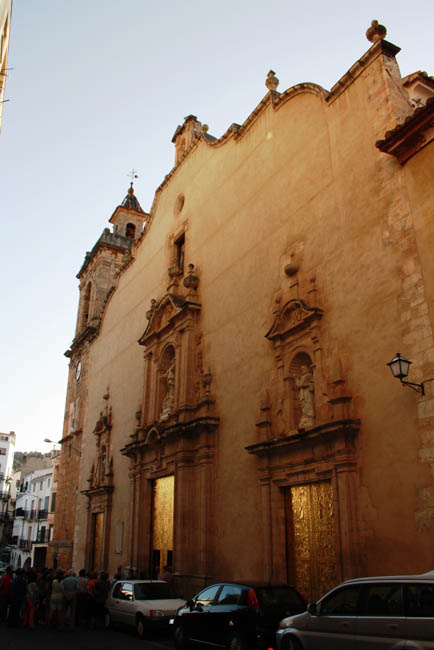The museum is located beneath the temple, and is divided into two parts, one dedicated to religious art and the other to local ethnography.
In the section dedicated to religious art, a magnificent 15th-century altarpiece stands out, measuring 3.8 metres by 2.6. The central panel features Anthony the Great and, at his sides, Saint Peter and Saint Paul. The Holy Christ of the Piety, the Virgin Mary, Saint John, James, son of Zebedee, and John the Baptist are at its base. The upper panel is dedicated to Our Lady of the Rosary. It is attributed to the artist called ‘Maestro del Milagro de Colonia’.
The museum also holds valuable pieces of gold and silver artwork. A brief description of these objects is provided below:
- According to the parish priest Mosén Millán, the polychrome wooden statues of Saint Peter of Verona, and a decorative angel, are early Baroque pieces. They therefore appear to be older than the current temple.
- According to the aforementioned academic, there is a 15th-century Florentine alabaster engraving that looks to have been multi-coloured. It portrays the Madonna and Child.
As well as chrismatories, reliquaries, plates and crosses, there are many other objects of incalculable value.
The museum’s ethnography section features a whole series of farming and other crafting tools, as well as furniture and home utensils.
Data
- Plaza España / Iglesia Parroquial / 12120 Lucena del Cid
- Telephone: 964 380 001
- www.lucenadelcid.es
- [email protected]
Hours
SUNDAYS AND FESTIVALS: 12:00 - 13:30.
More information
ACCESS
The way to access the Parish Museum is to start as a reference point from the entrance to the town along Avenida Castellón, continue along Avenida Fernando Leon, and then along calle Caballeros, then you will arrive at Plaza España located in the very centre of the town. This square can also be accessed by the Carretera de Teruel and the Carretera de Chodos, entering via Calle Sant Antoni.
LOCATION
Its location is in the Plaza España next to the porches and the belltower, on the inside of the Archpreistal Church of Ntra. Sra. De la Asunción, the most central place in the town and a meeting place of most of the streets that exist in the town.








